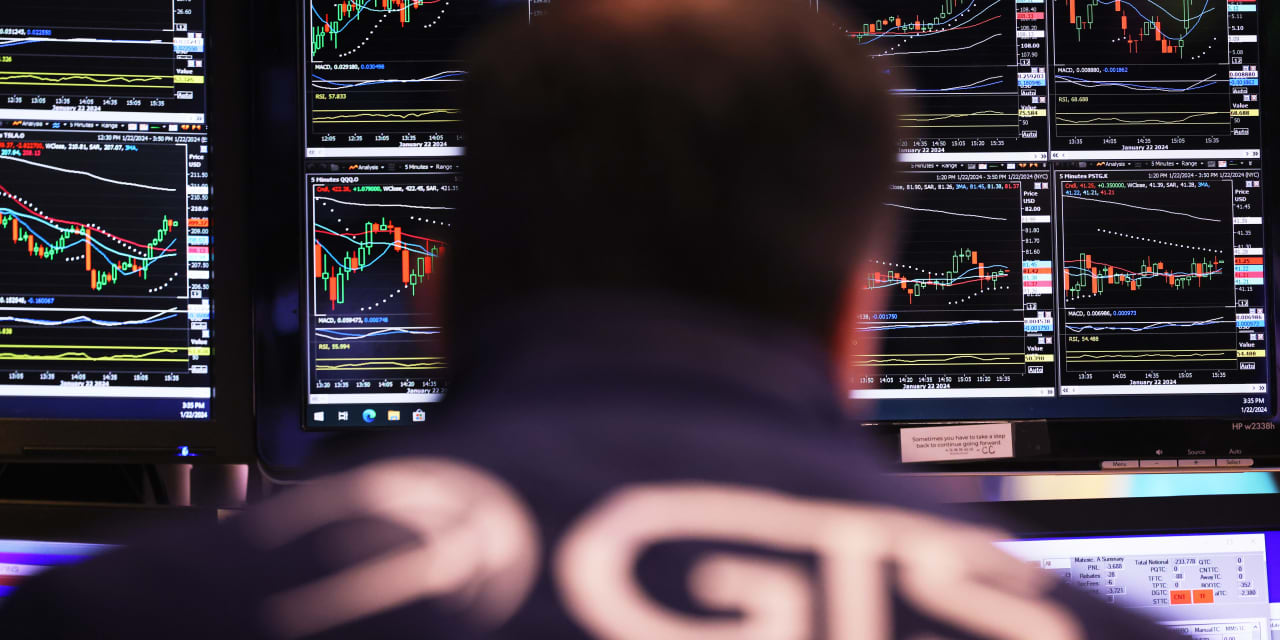In a world dominated by exciting new developments, from the rapid advancements in artificial intelligence to cryptocurrency’s roller coaster, it’s easy to forget that dullness has its own virtues. Many investors have gotten wealthy while nodding off.
In fact, bull markets are often very boring. That’s the takeaway from DataTrek co-founder Nicholas Colas’s latest look at the
S&P 500.
He notes that the index, which on average has notched a 1% standard deviation of daily price returns—i.e. being up or down less than 1%—over any 50- or 100-day trading period since 2005, has been remarkably quiet lately.
In fact, over the past 50 and 100 days, the S&P 500’s standard deviation of daily returns has been just 0.7 and 0.8 percentage points, respectively, some 20% to 30% below average; it hasn’t exhibited its normal 1% volatility pattern since May 2023.
Of course, that’s been a great eight-month period to be in the market, with the index rising more than 15%.
Things look similarly unvaried in tech as well, even as the Magnificent Seven big tech stocks rose over the past year. Since 2001, the CBOE Nasdaq 100 Volatility Index’s average daily close has been roughly 25, but currently it sits not far above 17.
Colas writes that just as volatility spikes during times of crises, the opposite holds true, with multiyear bull markets tending to be less volatile. A memory doesn’t have to be cast back very far for examples either, as this was the case for the bull runs that ended with the financial crisis and the Covid-19 pandemic.
“We often read that low-volatility markets are simply whistling past the graveyard of impending bad news,” he writes. “The reality is that bull markets fully understand the bear case but choose to ignore it because there are insufficient catalysts to bring it to the fore.”
In fact investors may be their own greatest enemy during these times, as the “no news is good news” environment can lead to trumping up small concerns and seeking out reasons to worry, when in fact rare pullbacks are in actuality buying opportunities.
Indeed, Colas points to low-volatility trends as more proof that it makes sense to stay bullish on big tech and the overall market’s ability to keep climbing in 2024.
With the
Dow Jones Industrial Average
and S&P 500 both logging record highs on Monday, and the
Nasdaq Composite
at a new 52-week high, Colas isn’t the only one feeling optimistic about the year ahead, with multiple strategists predicting the S&P 500 can breach the 5,000 mark and beyond, even if the U.S. endures a mild recession.
Yardeni Research President Ed Yardeni writes Tuesday that while the
Dow Jones Transportation Average
—a popular leading indicator—hasn’t caught up to the DJIA, he expects it will also hit a record high, confirming the overall bullish pattern for the market.
In addition, he points to the S&P 500’s estimated forward earnings for more assurance: Earnings-per-share expectations have been recovering from 2022’s downturn since last spring and have been rising to new highs since October—just before the market’s big year-end run.
For his part, Yardeni is upbeat like Colas, predicting that after a rocky start, the S&P 500 could run to 5,400 this year.
After 2023’s whirlwind gains and the new year’s bull-bear debate, it’s helpful to remember the quiet dominance of the tortoise market: Slow and steady often wins the race.
Write to Teresa Rivas at [email protected]
Read the full article here




